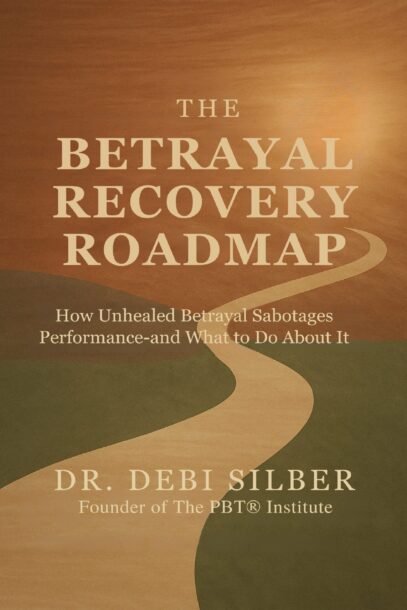The Silent Impact of Betrayal Trauma in the Workplace

We like to believe we can leave our personal struggles at the door when we show up to work. But the truth is, we don’t—and the wounds we never talk about cause the most damage.
Betrayal trauma—whether it’s a broken promise, leadership failure, family rupture, or infidelity—creates a deep internal fracture. It doesn’t just change how a person views the event. It permanently alters how they see themselves, others, and the world around them.
This silent, invisible wound ripples through every part of life, including the workplace. When betrayal trauma is unresolved, it impacts:
-
Confidence and clarity: Doubt clouds decision-making and fuels second-guessing.
-
Capacity to trust and delegate: Building teams and collaborating feels risky.
-
Willingness to lead, contribute, and innovate: Creativity and initiative diminish under emotional armor.
-
Emotional regulation, communication, and boundaries: Small triggers lead to outsized reactions—or withdrawal.
The real problem?
Most organizations don’t recognize betrayal trauma—or know how to respond when it shows up.
Instead of identifying the root cause, companies might label a struggling employee as “difficult,” “checked out,” or “burned out,” when in reality, they’re carrying an invisible burden.
Understanding the Silent Impact on Workplace Culture
At The PBT® (Post Betrayal Transformation®) Institute, we’ve studied how betrayal trauma hijacks the nervous system. Individuals stuck in survival mode experience:
-
Impaired focus, memory, and emotional regulation
-
Difficulty trusting leadership and coworkers
-
Reluctance to take risks, lead, or innovate
Unhealed betrayal trauma doesn’t stay contained—it spreads into the workplace, silently eroding:
-
Organizational trust
-
Employee engagement
-
Innovation and retention
If you’re noticing emotional volatility, repeated trust issues, or quiet disengagement on your teams, it’s time to ask:
Is unresolved betrayal trauma the hidden cause?
The Path to Healing and High-Performance Culture
The good news?
There is a clear, research-backed way forward.
Healing betrayal trauma requires more than therapy or surface-level interventions. It demands a structured process that rebuilds trust in the self first—then in others and the organization.
In my keynotes and workshops, we guide teams through:
-
Identifying subtle behavioral red flags of unhealed betrayal
-
Understanding the neuroscience behind trauma responses
-
Applying a step-by-step healing roadmap tailored for workplaces
-
Creating a culture of safety, trust, and resilience
When individuals heal, they regain their confidence, creativity, and leadership capabilities.
When teams heal, organizations thrive—with higher retention, stronger culture, and better overall performance.
Final Thoughts
Shattered trust doesn’t just hurt—it reshapes everything it touches.
But with the right support, individuals and organizations can rebuild stronger than ever before.
By finally naming the invisible wounds betrayal trauma causes—and offering a path to heal them—we unlock a more resilient, innovative, and thriving workplace culture.
Because when trust is rebuilt, potential is unleashed.
